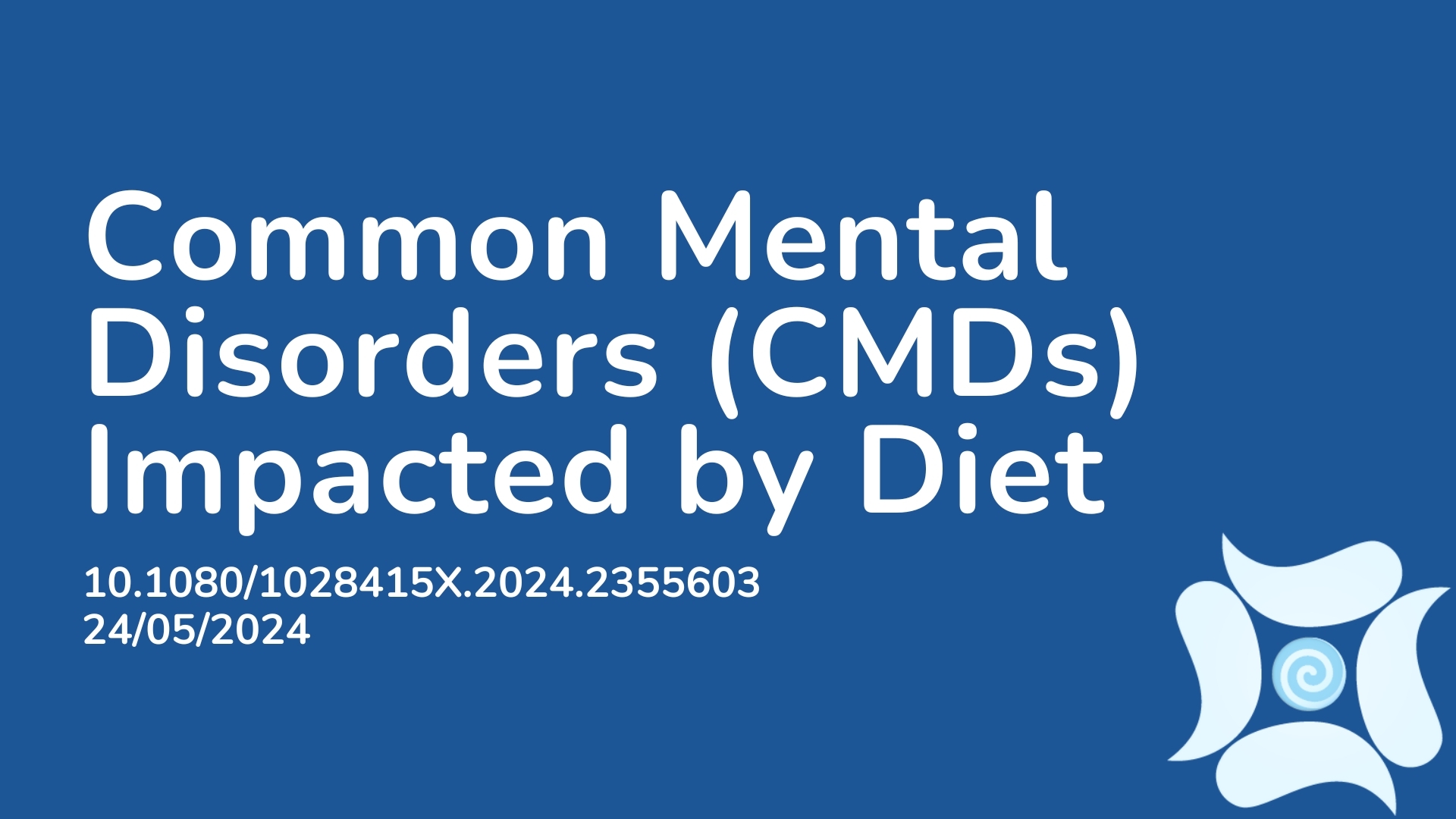Summary:
Common mental disorders (CMD), including depression and clinical anxiety, affect approximately 300 million people worldwide. Symptoms related to CMD, such as low mood, anxiety, and worry, are even more widespread. Ruminative negative thinking, defined as uncontrolled and repetitive thoughts about current concerns, past experiences, or future worries, has also consistently been identified as a diagnostic tool in CMD. It is well-established that an impaired balance in the prefrontal cortex, specifically an imbalance between glutamate (GLU) and gamma-aminobutyric acid (GABA), plays a role in the development of CMD. Altered concentrations of GABA and GLU in the frontal regions of the brain have been observed in individuals with CMD. Additionally, structural abnormalities in the brain have been found in these individuals compared to control groups. Of particular interest are non-pharmacological dietary interventions, given the role of diet as a key risk factor for non-communicable diseases. Dietary patterns high in polyphenols, fiber, antioxidants, and monounsaturated fats, and low in saturated fats, have been associated with improved outcomes in depression and anxiety. However, only few studies have demonstrated changes in brain metabolites related to diet. This study hypothesized that neurological measures would be associated with both diet quality and ruminative negative thinking, given the role of rumination in CMD. Thirty adults were divided into high and low diet quality groups and had their metabolite concentrations in the prefrontal cortex assessed. The low diet quality group exhibited reduced GABA levels and elevated GLU levels, indicating that unhealthy dietary patterns may be related to an imbalanced brain system, which could impact brain structure and, therefore, result in CMDs.
Abstract:
Objectives: Common mental disorders (CMD) are associated with impaired frontal excitatory/inhibitory (E/I) balance and reduced grey matter volume (GMV). Larger GMV (in the areas that are implicated in CMD-pathology) and improved CMD-symptomatology have been observed in individuals who adhere to high quality diets. Moreover, preclinical studies have shown altered neurometabolites (primarily gamma-aminobutyric acid (GABA) and glutamate (GLU) in relation to diet quality. However, neurochemical correlates of diet quality and how these neurobiological changes are associated with CMD and with its transdiagnostic factor, rumination, is unknown in humans. Therefore, in this study, we examined the associations between diet quality and frontal cortex neuro-chemistry and structure, as well as CMD and rumination in humans.
Methods: Thirty adults were classified into high and low diet quality groups and underwent 1H-MRS to measure medial prefrontal cortex (mPFC) metabolite concentrations and volumetric imaging to measure GMV.
Results: Low (vs High) diet quality group had reduced mPFC-GABA and elevated mPFC-GLU concentrations, as well as reduced right precentral gyrus (rPCG) GMV. However, CMD and rumination were not associated with diet quality. Notably, we observed a significant negative correlation between rumination and rPCG-GMV and a marginally significant association between rumination and mPFC-GLU concentrations. There was also a marginally significant association between mPFC-GLU concentrations and rPCG-GMV.
Discussion: Adhering to unhealthy dietary patterns may be associated with compromised E/I balance, and this could affect GMV, and subsequently, rumination.
Article Publication Date: 24/05/2024
DOI: 10.1080/1028415X.2024.2355603



